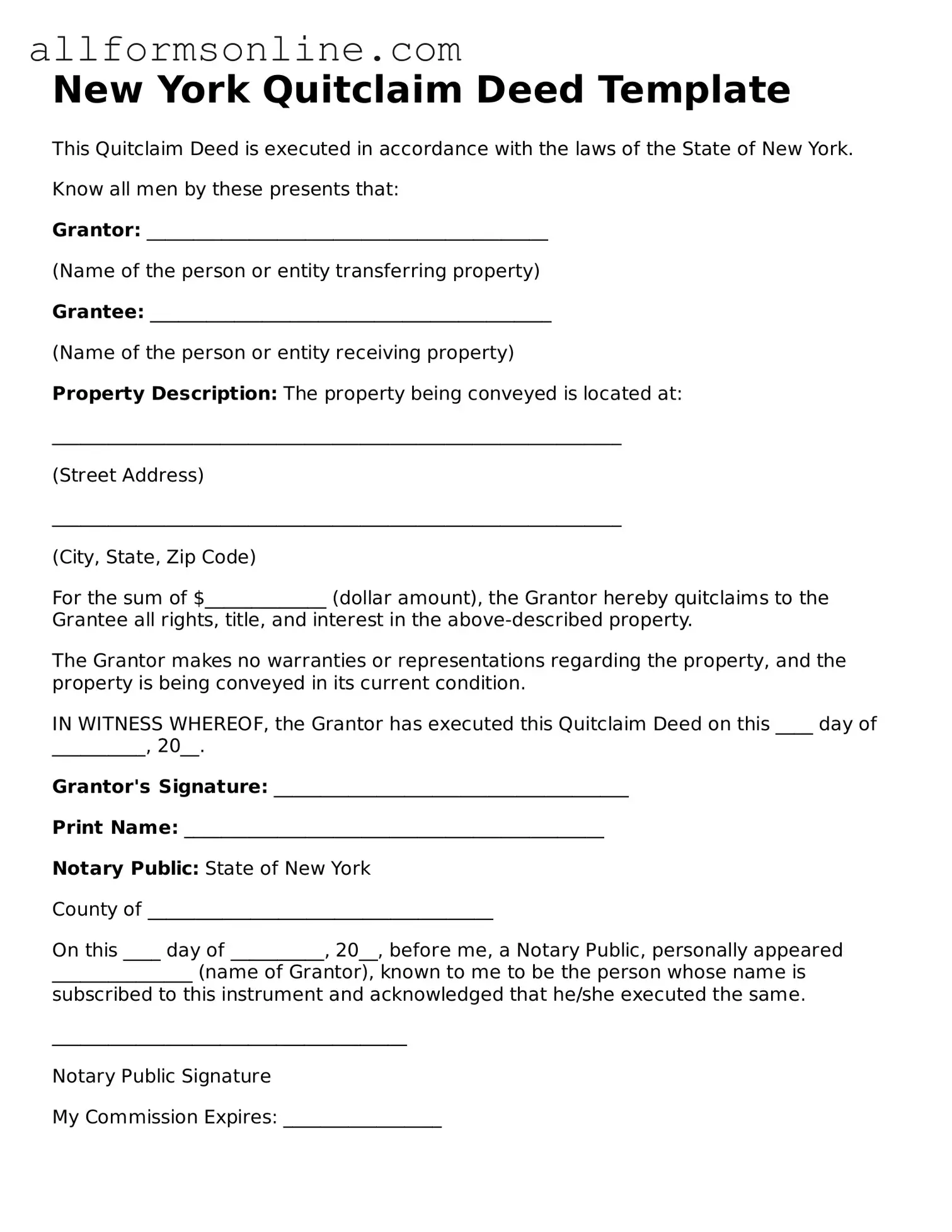What is a Quitclaim Deed in New York?
A Quitclaim Deed is a legal document used to transfer ownership of real estate from one person to another. In New York, it allows the grantor (the person giving up their interest) to convey whatever interest they have in the property, without guaranteeing that the title is clear. This means that if there are any liens or claims against the property, the new owner may inherit those issues.
When should I use a Quitclaim Deed?
You might use a Quitclaim Deed in several situations, such as transferring property between family members, adding or removing a spouse from the title after marriage or divorce, or when dealing with property in a trust. It's a straightforward way to transfer interests without the complexities of a warranty deed.
What are the requirements for a Quitclaim Deed in New York?
To create a valid Quitclaim Deed in New York, it must include the names of the grantor and grantee, a description of the property, and the date of the transfer. The deed must also be signed by the grantor in front of a notary public. Additionally, it should be filed with the county clerk's office where the property is located.
Do I need an attorney to prepare a Quitclaim Deed?
While it is not legally required to have an attorney prepare a Quitclaim Deed, it is often a good idea. An attorney can ensure that the deed is correctly filled out and that all legal requirements are met. This can help prevent future disputes or issues with the property title.
Is a Quitclaim Deed the same as a Warranty Deed?
No, a Quitclaim Deed is not the same as a Warranty Deed. A Warranty Deed provides a guarantee that the grantor holds clear title to the property and has the right to transfer it. In contrast, a Quitclaim Deed offers no such guarantees. The grantee receives only the interest the grantor has, if any.
What happens if there are existing liens on the property?
If there are liens on the property, the new owner who receives the property through a Quitclaim Deed may be responsible for those liens. Since the deed does not guarantee a clear title, it's important to conduct a title search before completing the transfer to understand any potential issues.
Can I revoke a Quitclaim Deed after it has been executed?
Generally, once a Quitclaim Deed is executed and recorded, it cannot be revoked unilaterally. However, if all parties involved agree, they can execute a new deed to reverse the transfer. It's advisable to consult with a legal professional in such cases to ensure the proper steps are taken.
How much does it cost to file a Quitclaim Deed in New York?
The cost to file a Quitclaim Deed in New York varies by county. Typically, there is a filing fee that ranges from $20 to $100. It's essential to check with your local county clerk's office for the exact fee and any additional requirements.
Do I need to pay taxes when using a Quitclaim Deed?
In New York, you may need to pay transfer taxes when using a Quitclaim Deed, depending on the circumstances of the transfer. Transfers between family members or certain types of trusts may be exempt. It's best to consult with a tax professional or attorney to understand any tax implications.
Where can I obtain a Quitclaim Deed form?
You can find a Quitclaim Deed form at your local county clerk's office, or you can download one from various legal websites. Make sure to use a form that complies with New York state laws to ensure it is valid.
